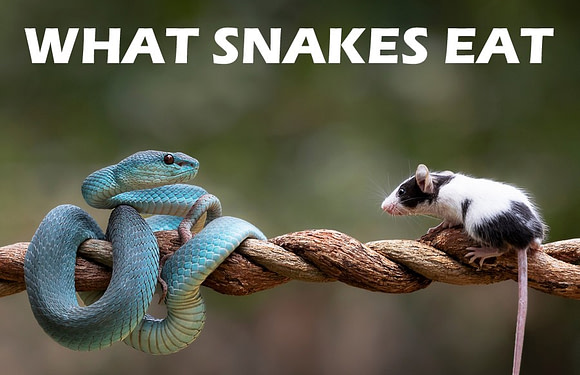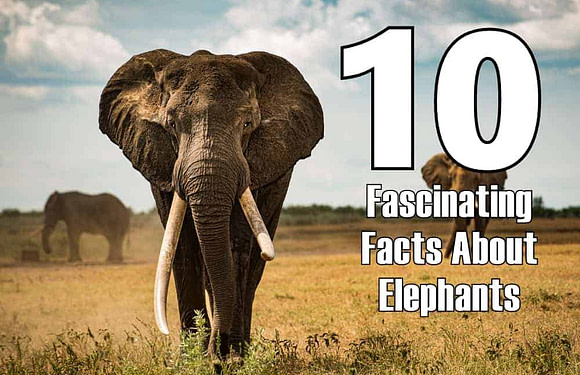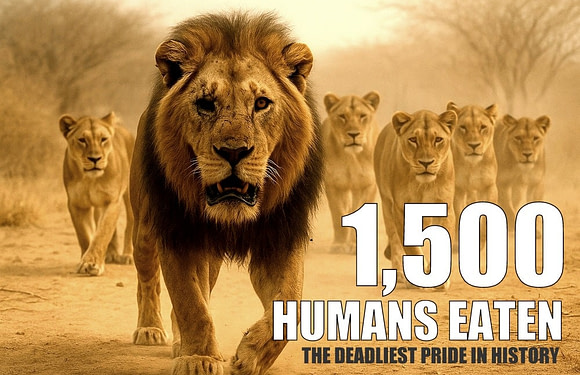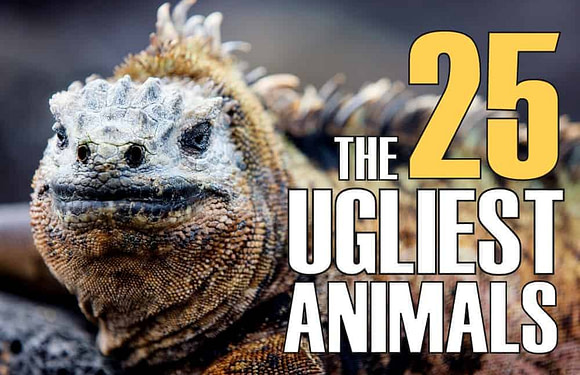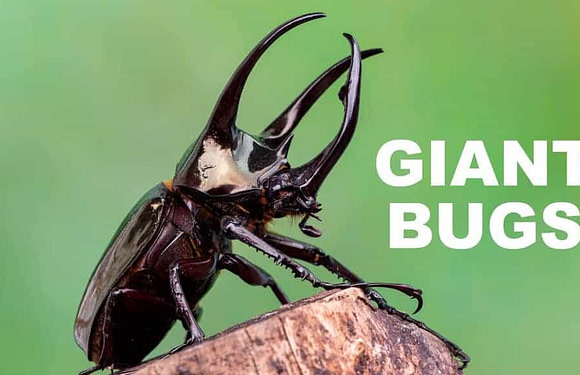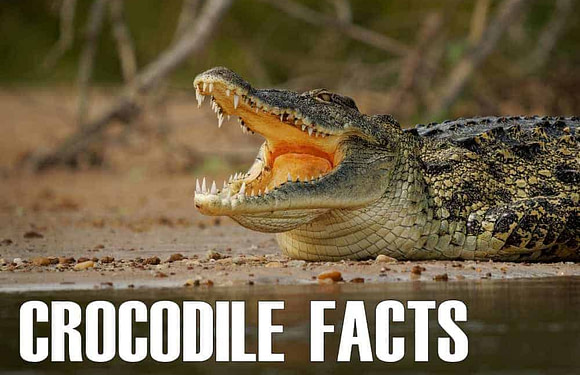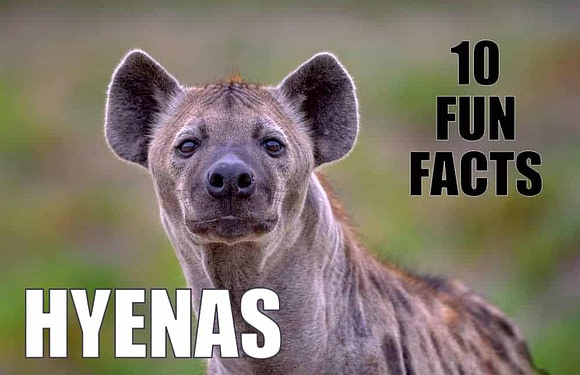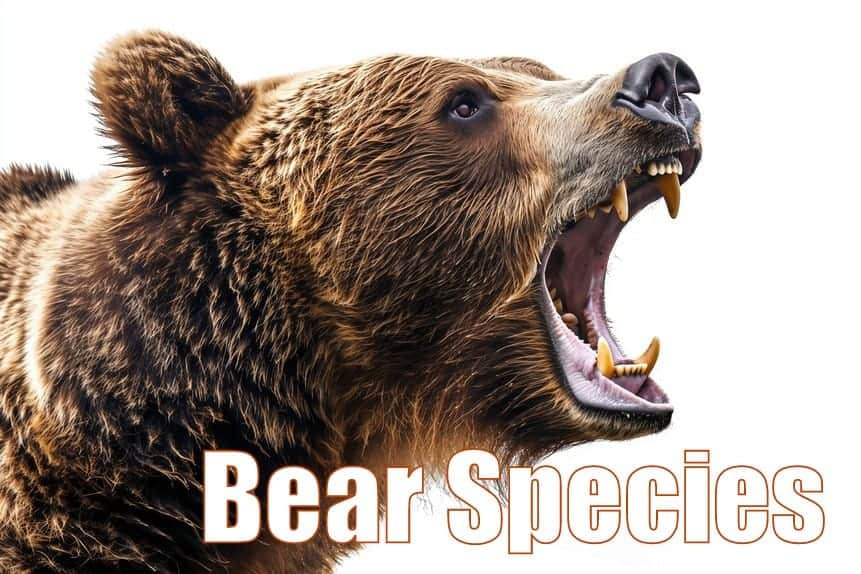
There are eight different types of bears. Each species is adapted to specific habitats and each has its own set of behavioral patterns and dietary preferences.
- American Black Bear
- Brown Bear
- Polar Bear
- Asian Black Bear
- Spectacled Bear
- Sloth Bear
- Giant Panda
- Sun Bear
The Evolution of Bears
Bears belong to the family Ursidae, a lineage of carnivores that have evolved about 40 million years ago. Early bear ancestors were small, tree-dwelling creatures. During their evolution, they transitioned from small, omnivorous animals to the larger, more specialized species we see today.
Throughout their history, bears expanded their range of habitats and continents, from dense forests to ice fields, and from the Americas to Asia. They developed numerous adaptations that have enabled their survival in these varied landscapes. These include powerful limbs for digging and climbing, long claws for foraging and defense, and a strong sense of smell to locate food over great distances. However, their size and need for substantial caloric intake make them vulnerable to habitat loss and food scarcity.
8 Types of Bears
American Black Bear (Ursus americanus)
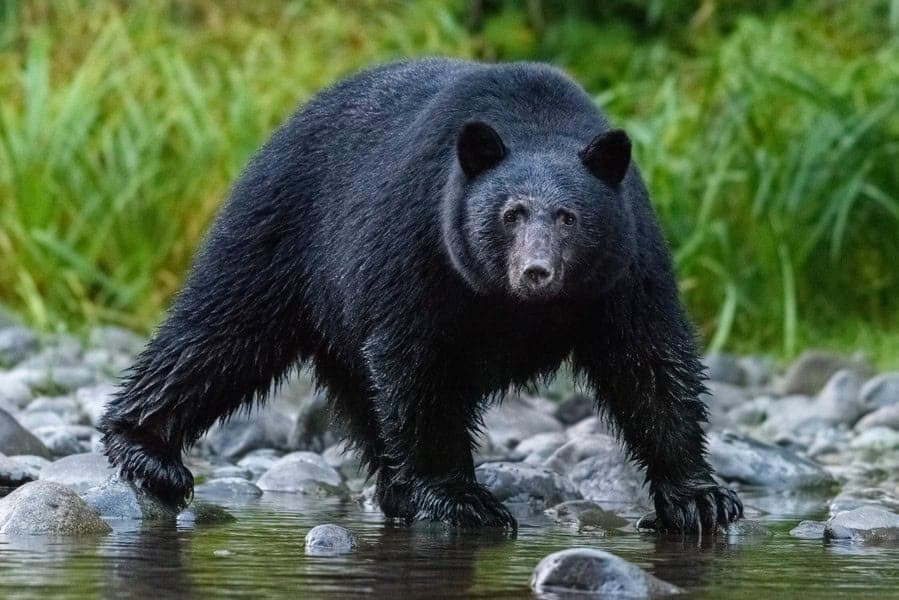
The American black bear is the most widespread bear species in North America. It ranges from the forests of Canada and Alaska down to parts of Mexico, covering various ecosystems. Typically, these bears measure 5 to 6 feet (1.5 to 1.8 meters) in length and weigh 200 to 600 pounds (90 to 272 kilograms). They have a varied diet that includes fruits, nuts, and occasionally meat. American black bears are known for their ability to adjust to different food sources and habitats, which is an advanrage in areas affected by human activity.
Here are 16 subspecies of the American black bear:
Ursus americanus altifrontalis (North American black bear), Ursus americanus amblyceps (New Mexico black bear), Ursus americanus americanus (Eastern American black bear), Ursus americanus californiensis (California black bear), Ursus americanus carlottae (Queen Charlotte Islands black bear), Ursus americanus cinnamomum (Cinnamon bear), Ursus americanus emmonsii (Glacier bear), Ursus americanus eremicus (East Mexican black bear), Ursus americanus floridanus (Florida black bear), Ursus americanus hamiltoni (Newfoundland black bear), Ursus americanus kermodei (Kermode or Spirit bear), Ursus americanus luteolus (Louisiana black bear), Ursus americanus machetes (West Mexican black bear), Ursus americanus perniger (Kenai black bear), Ursus americanus pugnax (Dall Island black bear), Ursus americanus vancouveri (Vancouver Island black bear)
Brown Bear (Ursus arctos)
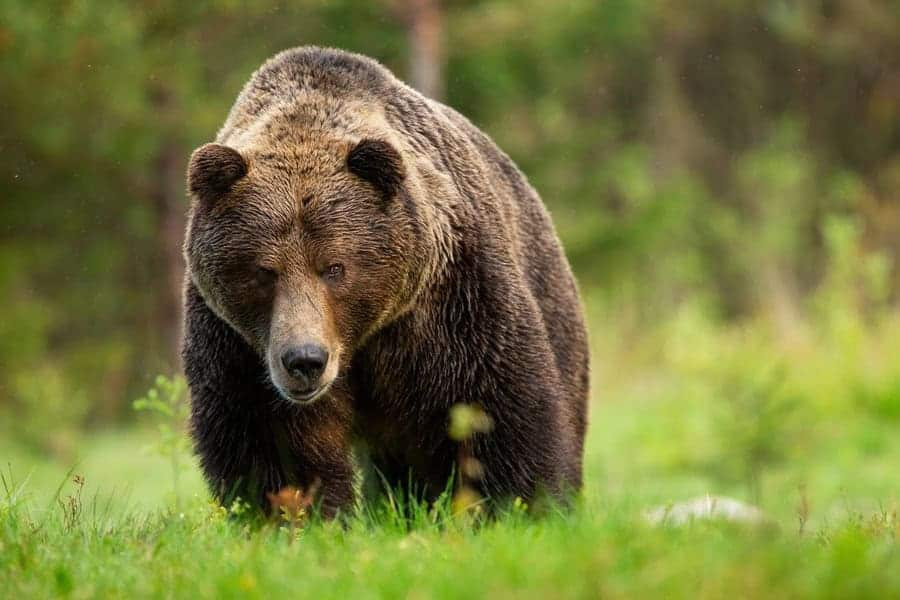
Brown bears are among the largest living terrestrial members of the bear family, found across North America, Europe, and Asia. They range in length from 7 to 10 feet (2.1 to 3 meters) and weigh between 300 and 1,000 pounds (136 to 453 kilograms). This species is resilient. It can inhabit forests, mountain areas, and even Arctic tundra.
Note that the terms “grizzly bear” and “brown bear” are often used interchangeably, but they describe subgroups within the same species, Ursus arctos. The distinction between them generally hinges on their habitat and behavior, rather than biological differences. The larger coastal bears of Alaska and western Canada are typically referred to as brown bears while those found further inland, in the mountainous regions of Canada and the United States, are referred to as grizzly bears.
Coastal brown bears, with their abundant food sources, are generally less aggressive and can coexist in closer proximity to other bears. Grizzly bears, with their harsher, more variable environments, are more territorial and solitary.
Here are 12 subspecies of the Brown bear:
Ursus arctos horribilis (Grizzly bear), Ursus arctos arctos (Eurasian brown bear), Ursus arctos beringianus (Kamchatka brown bear), Ursus arctos californicus (California grizzly bear, extinct), Ursus arctos collaris (East Siberian brown bear), Ursus arctos crowtheri (Atlas bear, extinct), Ursus arctos isabellinus (Himalayan brown bear), Ursus arctos lasiotus (Amur brown bear), Ursus arctos marsicanus (Marsican brown bear), Ursus arctos middendorffi (Kodiak bear), Ursus arctos pruinosus (Tibetan blue bear), Ursus arctos syriacus (Syrian brown bear)
Polar Bear (Ursus maritimus)
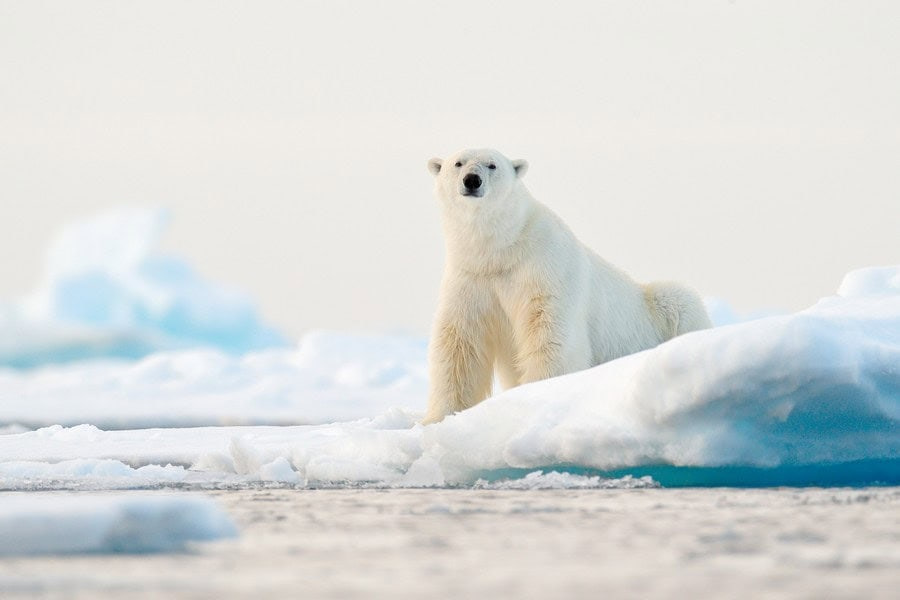
Polar bears are the largest bear species and are native to the Arctic Circle, encompassing the Arctic Ocean and its surrounding seas and landmasses. They roam from the edge of northern Canada and Greenland to the northern parts of Norway and Russia. Polar bears measure 8 to 10 feet (2.4 to 3 meters) in length and weigh 900 to 1,600 pounds (408 to 726 kilograms). These bears are excellent swimmers and are known to paddle long distances between ice floes to hunt seals, their primary prey. Adaptations like their white fur, which provides camouflage in snowy habitats, and a layer of fat for insulation, are critical for their survival in the harsh Arctic environment.
Asian Black Bear (Ursus thibetanus)
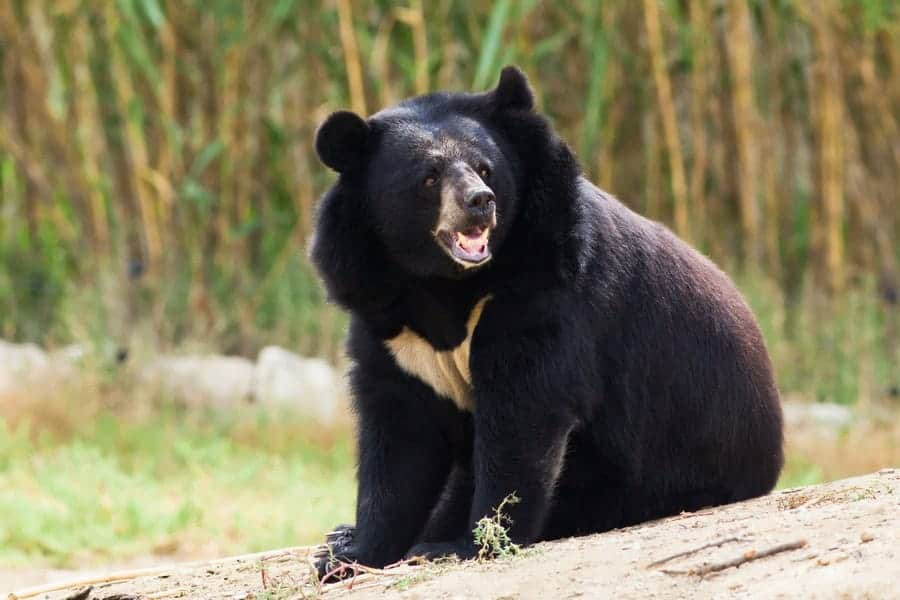
The Asian black bear is found in the forests of Asia, from Iran to Japan. They are also known as moon bears due to the white or cream crescent moon shape on their chest. These medium-sized bears typically measure 4 to 6 feet (1.2 to 1.8 meters) in length and weigh between 150 to 440 pounds (68 to 200 kilograms). This species is primarily arboreal and can be found in both tropical and temperate forests, which provide their varied diet of fruits, nuts, honey, small vertebrates, and insects.
Here are 7 subspecies of the Asian black bear:
Ursus thibetanus formosanus (Formosan black bear), Ursus thibetanus gedrosianus (Baluchistan bear), Ursus thibetanus japonicus (Japanese black bear), Ursus thibetanus laniger (Himalayan black bear), Ursus thibetanus mupinensis (Chinese black bear), Ursus thibetanus thibetanus (Tibetan black bear), Ursus thibetanus ussuricus (Ussuri black bear)
Spectacled Bear (Tremarctos ornatus)
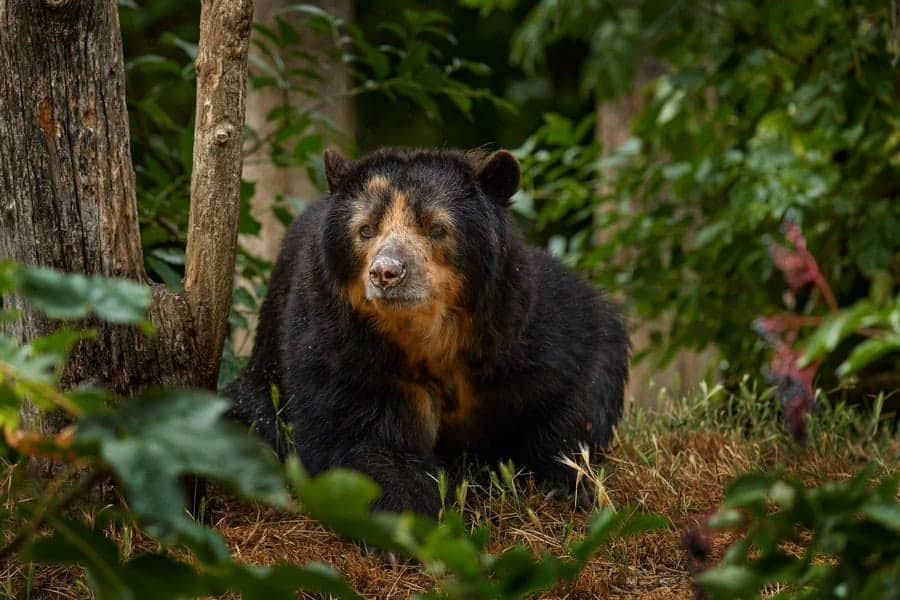
The Spectacled bear, also known as the Andean bear, is the only bear species native to South America and are found predominantly in the Andean regions from Venezuela to Bolivia. They are named for the white or cream markings around their eyes, which resemble eyeglasses. These bears are relatively small compared to other bears, with lengths of 4 to 6 feet (1.2 to 1.8 meters) and weights ranging from 175 to 275 pounds (79 to 125 kilograms). Their diet is also the most herbivorous of all bears, predominantly consisting of fruits, cacti, and bromeliads, supplemented by small amounts of meat from rodents or carrion.
Sloth Bear (Melursus ursinus)
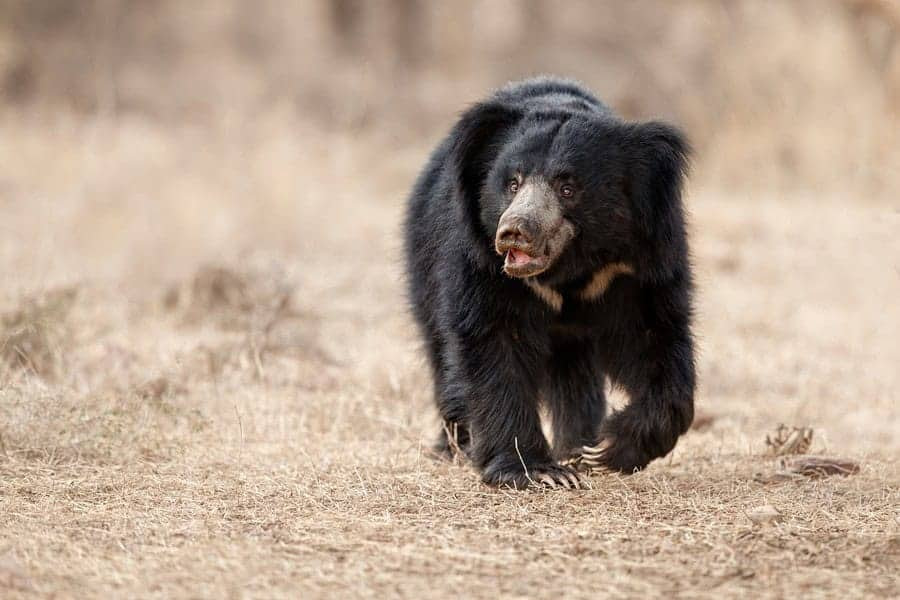
Sloth bears are native to the Indian subcontinent, found in India, Sri Lanka, and Nepal. Unlike other bears, they are primarily nocturnal and feed mostly on termites and ants. They have a long, protrusible lip and a gap in their front teeth through which they can suck insects out of their nests. Sloth bears are medium-sized, generally 5 to 6 feet (1.5 to 1.8 meters) in length and weigh 175 to 310 pounds (79 to 140 kilograms). They have shaggy, black coats with a ‘V’ or ‘Y’ shaped white or yellow chest patch. Sloth bears are the only bears that carry their young on their backs, a trait more commonly associated with primates.
The 2 subspecies of the Sloth bear are Melursus ursinus ursinus (Indian sloth bear) and Melursus ursinus inornatus (Sri Lankan sloth bear).
Giant Panda (Ailuropoda melanoleuca)
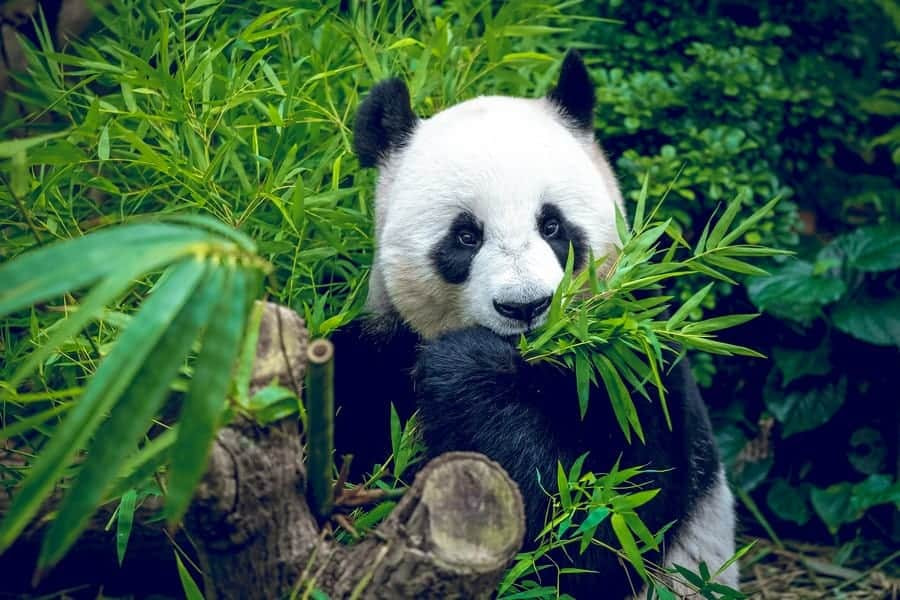
Giant pandas are native to the mountain ranges in central China. They are recognized for their constrasting black and white coloring. Pandas are generally 4 to 6 feet (1.2 to 1.8 meters) long and weigh 150 to 300 pounds (68 to 136 kilograms). They have a highly specialized diet, consuming almost exclusively bamboo. They eat between 26 to 84 pounds (12 to 38 kilograms) of bamboo daily. Pandas are considered a conservation success story, with their status improving from “endangered” to “vulnerable” due to intensive conservation efforts by the Chinese government and international organizations.
Sun Bear (Helarctos malayanus)

Sun bears are the smallest of the bear species and are found in the tropical forests of Southeast Asia, ranging from India to Vietnam and south to Indonesia. They measure about 4 to 5 feet (1.2 to 1.5 meters) in length and weigh 60 to 150 pounds (27 to 68 kilograms). These bears haver sleek, black fur with a distinctive orange to cream-colored chest patch that resembles a rising sun, hence their name. Sun bears are excellent climbers and spend a significant amount of time in trees where they forage for food and rest in nests built from branches. Their diet is omnivorous, consisting of fruit, nuts, insects, small vertebrates, and the occasional raid on beehives.
Largest Extinct Bear: The Short-faced Bear
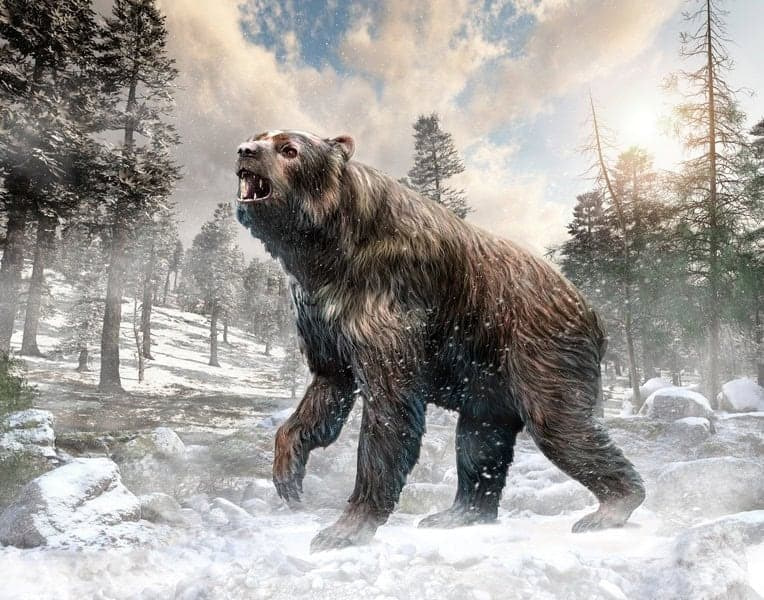
The Short-faced Bear, scientifically known as Arctodus simus, is the largest bear ever to exist. This colossal bear roamed North America during the Pleistocene epoch, approximately 1.8 million to 11,000 years ago.
Arctodus simus stood about 6 feet (1.8 meters) tall at the shoulder when on all fours, but it could reach heights of over 12 feet (3.7 meters) when standing upright. The bear’s estimated weight ranged from 900 to 2,500 pounds (408 to 1,134 kilograms), making it significantly larger than any living bear species today.
The Short-faced Bear’s massive size and powerful limbs suggest it was a capable predator, although there is ongoing debate among scientists about whether it was a predator or scavenger. Its long legs and large stride would have made it an exceptionally fast runner, capable of covering large distances to find food or scavenge carcasses.
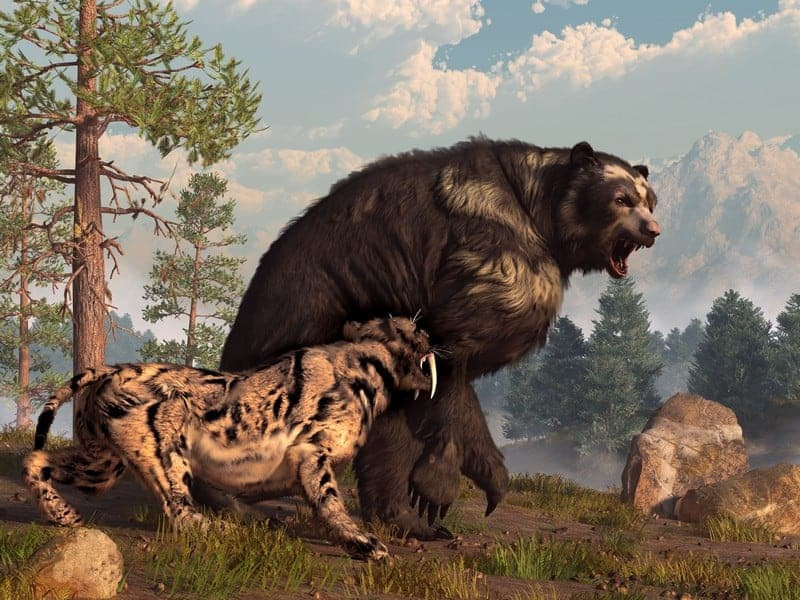
The diet of the Short-faced Bear was likely varied, consisting of both meat and plant matter. Isotopic analysis of fossils suggests that it competed with other large predators of the time, such as the saber-toothed cat and dire wolves, for prey.
Unfortunately, the Short-faced Bear went extinct at the end of the last Ice Age, around the same time as many other large mammals in North America. Factors contributing to its extinction likely include climate change, habitat loss, and competition with other species, including humans.
Are There Any Bears in Africa?
Today, Africa lacks a native bear population. However, the continent was home to several species of bears in the past.
The most well-known of these was the Atlas Bear (Ursus arctos crowtheri). This bear was Africa’s only native bear species in modern times but became extinct in 1870. It predominantly inhabited the Atlas Mountains across Morocco to Libya. The Atlas Bear was a subspecies of the brown bear and was believed to have been a forest-dwelling species, which made it quite different compared to its European relatives.
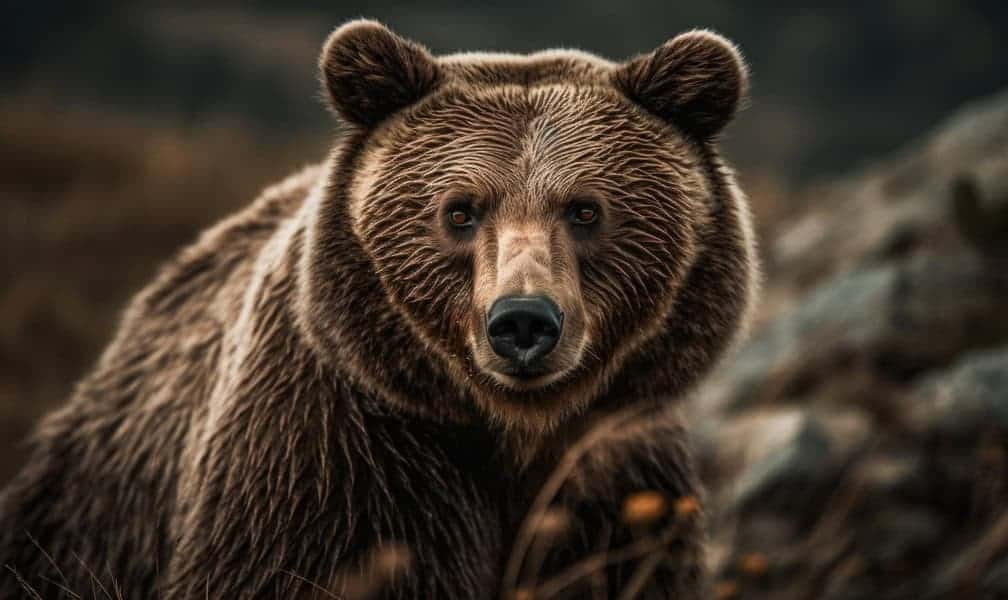
There were also occasional sightings and evidence suggesting that the Syrian Brown Bear (Ursus arctos syriacus), primarily native to Asia, ventured into the northern regions of Africa, particularly Egypt. However, this subspecies was not a native resident and is more associated with the Middle East and parts of Asia.
Finally, there is fossil evidence suggesting that ancestral bear species, such as Agriotherium africanum, did exist in Africa millions of years ago during the Miocene to Pliocene epochs. Agriotherium was not a direct ancestor of today’s bears but shared a common lineage. This species became extinct, likely due to the climatic changes that transformed much of the continent’s forests into grasslands, reducing the habitat suitability for such large omnivores.
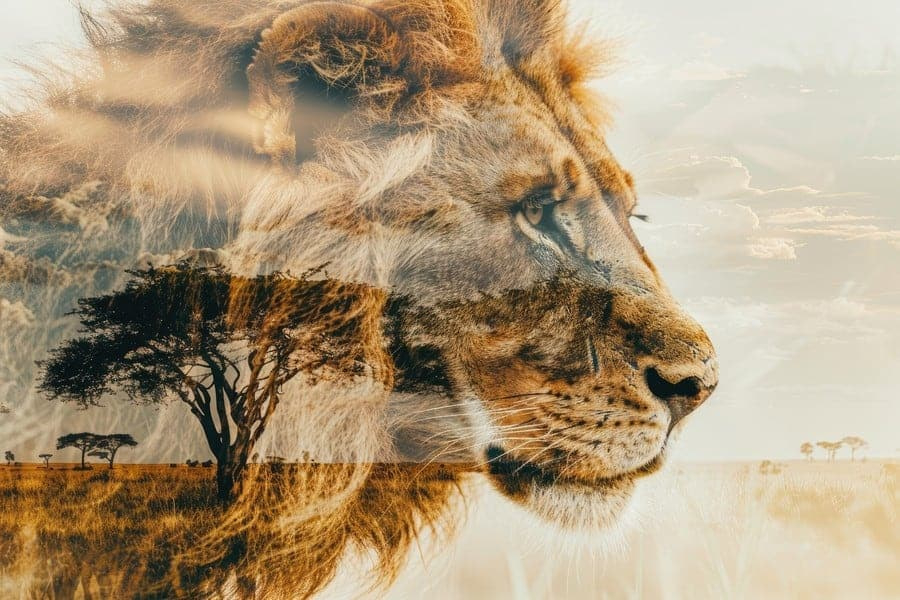
Africa’s environmental conditions and competitive ecosystems presented challenges that perhaps prevented bears from maintaining a foothold. The continent’s landscapes are dominated by expansive savannas, deserts, and tropical forests. Bears favor more temperate forested regions with abundant, varied food sources. Furthermore, Africa’s existing carnivores—such as lions, hyenas, and leopards—create a highly competitive predatory environment. These animals occupy ecological niches that might have been otherwise filled by bears.
In conclusion, while bears did once roam Africa, their presence dwindled due to evolving climates and competitive pressures from other predators. Today, without any native bear species, other large mammals fill the roles that bears might have occupied in Africa.



















































